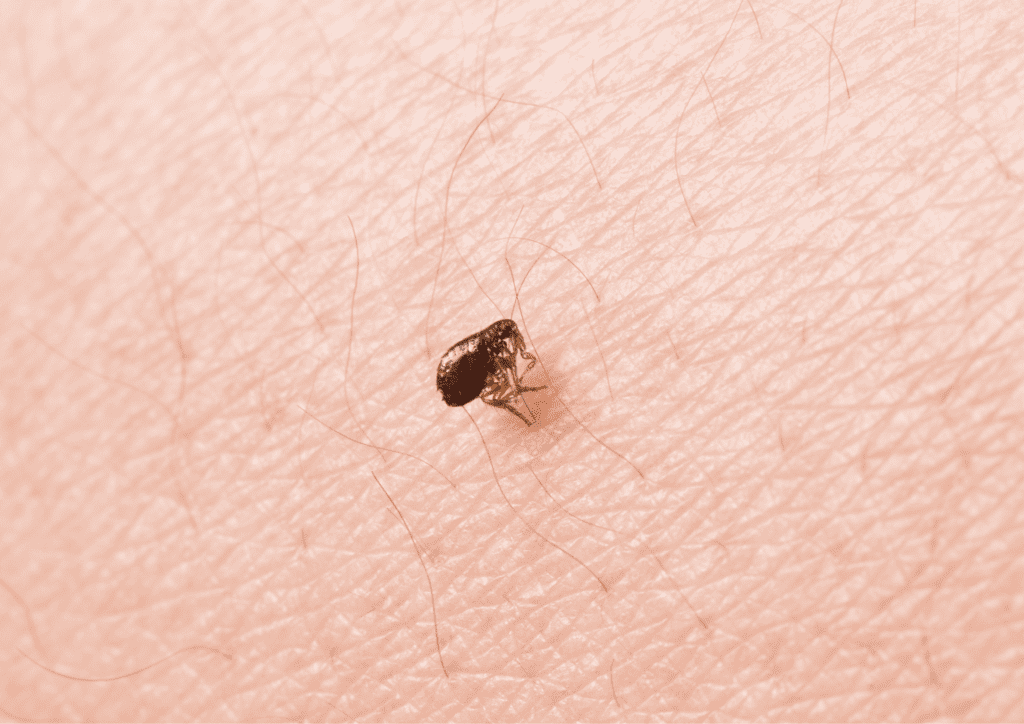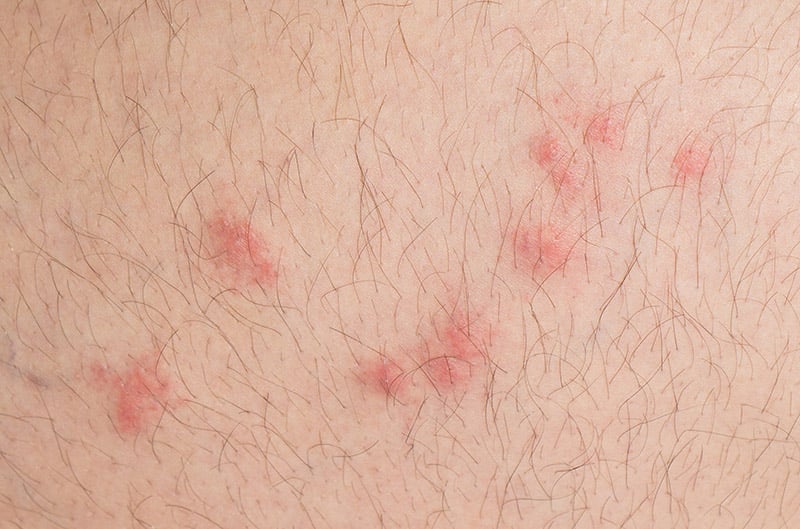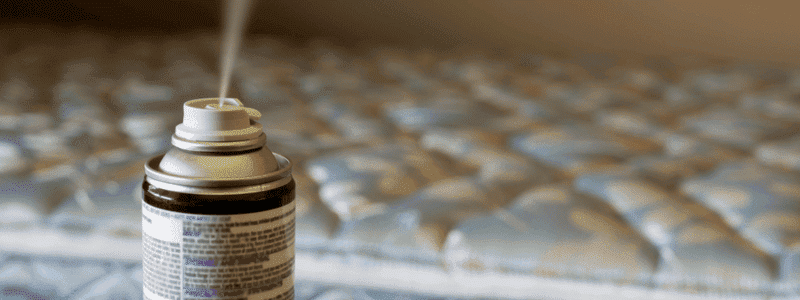If you’re struggling with a persistent flea infestation in your car, don’t despair—there are effective solutions to tackle this pesky problem. Fleas can hitch a ride into your vehicle from a variety of sources, and can quickly make their home in your car’s upholstery, carpets, and other hiding spots.
In this comprehensive guide, we’ll explore essential tips to help you identify, control, and prevent flea infestations in your car, whether you have pets or not. By following our expert advice, you can reclaim your vehicle from these unwelcome passengers and ensure a comfortable, flea-free driving experience.
POINTS
- Fleas can infest cars even without pets, finding their way inside through infested environments, contaminated items, or by hitching a ride on clothing or shoes.
- Thorough vacuuming, steam cleaning or shampooing upholstery, using flea control products, and washing removable items are effective methods for eliminating fleas from cars.
- Regular vet-approved flea treatment for pets and maintaining a clean environment can help prevent future flea infestations in cars.
- Fleas are sensitive to environmental conditions, and can die in extreme heat or cold, and low humidity. However, relying solely on temperature to eliminate fleas may not be fully effective.
- To prevent future infestations, regularly inspect and treat your pets, maintain a clean car interior, and be cautious of parking or spending time in flea-infested environments.
Understanding Flea Infestation in Cars
Can fleas live in a car?

Yes, fleas can live in a car. Although they prefer to live on hosts like pets or humans, fleas can infest your car if you or your pets inadvertently bring them in. Due to their small size and highly adaptable nature, fleas can find plenty of hiding spots in your car’s upholstery, carpets, and even vents.
What are the factors leading to flea infestations in cars?

There are several factors that contribute to flea infestations in cars:
| Factor | Description |
|---|---|
| Pets | Pets, particularly dogs and cats, are the most common carriers of fleas into cars. Fleas can jump from the pet’s fur onto car interiors. |
| Infested environments | Parking near or driving through flea-infested areas like wooded zones or tall grass can allow fleas to enter the vehicle. |
| Contaminated items | Bringing items that are already infested with fleas, such as old rugs or furniture, into your car can transfer fleas to the car’s interior. |
How long can fleas survive in my car?
Fleas can survive in your car for an extended period, sometimes up to several weeks or even months. However, their survival largely depends on the availability of food sources (blood), temperature, and humidity. Fleas thrive in warm and humid environments and may become inactive if the conditions are unfavorable.
How do fleas infest cars?

Fleas infest cars by catching a ride from habitats where they are already present, such as on an infested pet, wildlife, or other contaminated items. They can also latch onto your clothing or shoes, making their way into your car. Once inside the vehicle, fleas will search for dark, warm, and protected areas to lay eggs and reproduce.
How do I know if I have fleas in my car?

There are several signs that indicate a flea infestation in your car:
- Visible fleas: The most obvious sign of fleas in your car is spotting the adult fleas themselves. They are small, dark, and wingless insects that are visible to the naked eye.
- Flea excrement: Fleas leave behind tiny, black, pepper-like droppings called “flea dirt.” You may find these on the seats or floor mats in your car.
- Flea bites: If you or your pets are experiencing itchy, red bites, particularly around the ankles, fleas might be present in your car.
- Scratching pets: If your pets frequently scratch themselves after riding in the car, it is a possible sign they have been bitten by fleas.
Remember that identifying the existence of fleas in your car is the first step to successfully eliminating them.
Dealing with Fleas in Cars without Pets
Can fleas infest a car even if I don’t have pets?

Yes, it’s possible for fleas to infest a car even if you don’t own pets. Fleas can still find their way into your car through other means, such as infested environments, contaminated items, or by hitching a ride on your clothes or shoes. While having pets increases the likelihood of a flea infestation, it’s not the only possible cause.
How to treat a car for fleas if I don’t own pets?

Even without pets, your car can become a refuge for fleas through other avenues. Here is a detailed table outlining each step you should take to treat your car for fleas, complete with specific actions and helpful tips.
| Step | Action | Tips and Considerations |
|---|---|---|
| Vacuum thoroughly | Vacuum every part of the car’s interior, including hard-to-reach places. | Dispose of the vacuum bag or clean the vacuum canister immediately to prevent fleas from escaping. |
| Steam clean or shampoo | Use a steam cleaner or shampoo for carpets and upholstery. | Follow the manufacturer’s instructions to ensure effectiveness and avoid damage to car interiors. |
| Wash removable items | Wash floor mats and seat covers in hot water with detergent. | Ensure the water is hot enough to kill fleas and their eggs. |
| Apply flea control products | Use sprays or powders formulated for vehicles. | Choose products safe for use in confined spaces and follow application guidelines carefully. |
| Regular inspection and maintenance | Regularly inspect and clean the car’s interior. | Keeping the car clean helps prevent future infestations. |
What are the specific signs of fleas in cars without pets?

In cars without pets, the signs of fleas may be less obvious. You should watch out for the following signs:
- Itchy, red bites on humans: Fleas can bite humans, causing red, itchy welts, particularly around the ankles. If you or your passengers experience these bites after being in the car, it might indicate the presence of fleas.
- Visible fleas or flea dirt: Even without pets, you may still spot adult fleas or their pepper-like droppings in your car. Pay attention to the car’s carpeting, seats, and floor mats for any evidence of their presence.
- Persistent itching after being in the car: If you find yourself persistently itching after spending time in your vehicle, it could be a sign that fleas are present, and your skin may have come into contact with their droppings.
Stay vigilant and examine your car’s interior regularly to identify and treat any signs of fleas as quickly as possible.
Effective Methods for Removing Fleas from Cars
How to get rid of fleas in my car?

To get rid of fleas in your car, follow these steps:
- Vacuum the entire car: Start by thoroughly vacuuming every part of your car’s interior, including the seats, carpets, floor mats, and crevices. This will help remove adult fleas, eggs, and larvae. Dispose of the vacuum bag or clean the vacuum canister promptly after use to avoid re-infestation.
- Use flea control products: Apply a flea control product, such as a flea spray specifically designed for car interiors. Make sure to follow the product’s instructions for application and safety precautions.
- Clean upholstered surfaces: Steam clean or shampoo your car’s carpets and upholstery to kill fleas and their eggs. Follow the manufacturer’s instructions for the cleaning equipment and chemicals.
- Wash removable items: If your car has removable floor mats or seat covers, wash them in hot water with detergent to eliminate fleas and their eggs.
- Inspect and maintain your car regularly: Regularly check your car’s interior and keep it clean to prevent future infestations.
What are the best techniques to get fleas out of your car?
Removing fleas from your car requires a combination of best techniques to ensure thorough eradication of both adult fleas and their eggs. Below is a comparison table of the most effective methods for flea removal from cars, detailing their effectiveness, associated costs, and safety considerations for humans and pets.
| Method | Effectiveness | Cost | Safety for Humans and Pets |
|---|---|---|---|
| Vacuuming | High | Low | Very safe; no chemicals involved. |
| Steam Cleaning | High | Medium | Safe, but ensure proper ventilation during the process. |
| Flea Control Products | Very High | Varies | Use with caution; follow instructions carefully. |
| Washing Removable Items | High | Low | Safe and effective when using hot water and detergent. |
Can you use a flea bomb in a car, and how effective is it?

While you can use a flea bomb in a car, it may not be the most practical or effective option due to the confined space and potential hazards associated with the chemicals used in flea bombs. It is usually safer and more effective to use flea control products specifically designed for car interiors, such as flea sprays or insecticide powders.
What is the best flea bomb for cars?
There isn’t a specific flea bomb designed for cars. Instead, consider using a flea spray formulated for car interiors or an insecticide powder, as they are safer alternatives to flea bombs in confined spaces like vehicles.
Are there specific sprays effective for eliminating car fleas?

Yes, there are sprays precisely designed to eliminate fleas from car interiors. When choosing a flea spray, opt for one formulated for car interiors or general household use that is safe for both humans and pets. Be sure to follow the product’s instructions for application and safety precautions.
How effective is vacuuming in removing fleas from the car?
Vacuuming is an effective method of removing fleas from your car, as it can help eliminate adult fleas, eggs, and larvae. However, vacuuming alone may not be enough to completely eradicate the infestation. It is best to combine vacuuming with other methods, such as using flea control products and cleaning upholstered surfaces, to ensure a thorough removal of fleas from your car.
Handling Flea Infestation Related to Pets in Cars
How to deal with a flea infestation in the car related to pets?

If you suspect your pet is the cause of the flea infestation in your car, follow these steps:
- Treat your pet: Consult with your veterinarian and use a suitable flea treatment for your pet, such as topical treatments, oral medications, or flea collars. Make sure your pet completes the treatment as recommended by the vet to eliminate fleas and prevent re-infestation.
- Clean your pet’s belongings: Wash your pet’s bedding, toys, and any other items that may carry fleas in hot water and detergent. This will help kill remaining fleas and their eggs.
- Treat your car: Follow the steps outlined earlier to remove fleas from your car. Vacuum thoroughly, use flea control products, clean upholstered surfaces, and wash removable items.
- Establish a routine: Establish a routine for checking and treating your pet for fleas to prevent recurring infestations. Regular grooming and the use of preventive flea treatments can help keep your pet flea-free.
What is the proper method for treating pets to prevent car flea re-infestation?

To prevent car flea re-infestation related to your pets, follow these tips:
- Regularly groom your pet: Comb your pet with a flea comb at least once a week to remove adult fleas, eggs, and debris. This will also help you monitor your pet for any signs of flea infestations.
- Use preventive flea treatments: Consult with your veterinarian and use appropriate preventive flea treatments for your pet, such as topical treatments, oral medications, or flea collars. Follow your vet’s recommendations for the correct dosage and frequency of treatment.
- Keep your pet’s environment clean: Regularly clean and vacuum your pet’s living space, bedding, and toys to eliminate flea breeding grounds.
- Be vigilant: Monitor your pet for any signs of flea activity. Early detection and treatment can help prevent a full-blown infestation.
Can I use a flea treatment in my car for my pets?
While you can treat your pet for fleas inside your car, it’s not the most effective or recommended approach. Flea treatments for pets are focused on ridding the pet itself of fleas, not the environment in which they live. It’s essential to treat your car separately by following the methods mentioned earlier for removing fleas from cars.
Instead of treating your pet inside the car, focus on treating your pet at home and preventing fleas from infesting your car again. Proper grooming and preventive flea treatments play a vital role in keeping both your pet and your car flea-free.
Understanding the Impact of Environment on Fleas in Cars
Will fleas die in a hot car?

Yes, fleas can die in a hot car. Fleas are sensitive to extreme temperatures, and prolonged exposure to high heat can kill them. A car’s interior can reach temperatures up to 160°F (71°C) on a hot day, which is enough to kill adult fleas and their eggs.
However, relying solely on high temperature to eliminate a flea infestation is not recommended, as it may not be effective in killing all of the fleas due to varying temperature distribution across the vehicle. A combination of treatments, such as vacuuming, flea control products, and cleaning upholstered surfaces, is more effective in fully removing fleas from your car.
Does the car’s environment (heat, cold, humidity) impact flea survival?
The car’s environment, including heat, cold, and humidity, has a significant impact on flea survival. Fleas thrive in warm and humid conditions, and their activity usually decreases during colder months. Here’s how different environmental factors affect fleas:
- Heat: As mentioned earlier, extreme heat can kill fleas. A car’s interior exposed to high temperatures can become inhospitable for fleas, causing them to die. However, cars that are parked in shaded areas or frequently used during hot weather may not reach temperatures high enough to kill fleas.
- Cold: Fleas can survive cold temperatures, but their metabolism slows down, and they become less active. Extreme cold can kill some fleas, but they may still survive by finding warmer spots within the car.
- Humidity: Fleas require a certain level of humidity to complete their life cycle. When humidity levels are low, their eggs and larvae are more likely to dry up and die. However, if the car’s environment remains humid, the flea population can thrive and multiply.
To increase the chances of successfully eliminating fleas from your car, it’s essential to understand how environmental factors affect their survival and use that information along with other flea control methods mentioned earlier.
Repeat Treatments and Preventing Future Flea Infestations in Cars
How often should I repeat the treatment process to ensure all fleas are removed from my car?
To successfully eradicate fleas from your car and prevent future infestations, it is crucial to follow a consistent treatment regimen and maintain regular preventive measures. The table below outlines the necessary actions for repeat treatments along with strategies to keep your car flea-free over time.
| Action | Frequency | Details |
|---|---|---|
| Vacuuming | Every 1-2 weeks | Thoroughly vacuum the car’s interior to remove fleas and flea debris. |
| Application of Flea Products | As needed | Use flea control products suited for vehicles, following safety guidelines. |
| Inspection | Monthly | Regularly check for signs of fleas or flea dirt in the car. |
| Cleaning Removable Items | After any infestation signs | Wash mats and covers in hot water immediately if fleas are detected. |
| Professional Cleaning | Annually or after infestations | Consider a deep clean by professionals if infestations recur. |
How to prevent future flea infestations in my car?

Preventing future flea infestations in your car involves vigilance and routine maintenance, such as:
- Regularly inspect and clean your car: Keep your car clean by vacuuming and wiping down surfaces frequently. This helps in reducing the chances of fleas establishing a new infestation.
- Treat your pets: Maintain a routine for checking and treating your pets for fleas. Use preventive flea treatments as recommended by your veterinarian.
- Keep your pet’s environment clean: Regularly clean and vacuum your pet’s living space, bedding, and toys to eliminate breeding grounds for fleas.
- Be cautious of infested environments: Parking and spending time in areas infested with fleas increases the chances of them entering your car. Be aware of your surroundings and avoid parking in flea-prone areas.
By following these preventive measures, you can significantly reduce the likelihood of future flea infestations in your car.
Conclusion
Dealing with a flea infestation in your car can be challenging, but it is essential to identify and address the issue promptly. By understanding the factors leading to flea infestations and the environmental conditions affecting flea survival, you can take effective steps to eliminate and prevent further infestations. Combining methods such as vacuuming, using flea control products, and cleaning upholstered surfaces yields the best results in removing fleas from your car.
Additionally, regularly treating and grooming your pets as part of a preventative routine is key to keeping both your pets and your car flea-free. By being vigilant and maintaining a clean car environment, you can successfully keep those unwelcome pests at bay and enjoy a comfortable, flea-free ride.



